We live in a time of advanced engineering and accomplishment. Modern design and building techniques have resulted in structures that are built to tower over cities and make bridges across oceans.
As amazing as our buildings, bridges, and other structures are, we know they are not infallible. “To err is human,” and when an error – or worse, a deliberate negligent act – affects the integrity of one of our buildings, bridges, dams or any large structure, the consequences are often disastrous.
Were You or Your Loved One Injured in a Structural Collapse Accident?
Find on This Page
- Were You or Your Loved One Injured in a Structural Collapse Accident?
- A Long History of Structural Collapse
- Causes of Catastrophic Failures
- What should you do if you or a loved one was injured or a family member lost their life in a structural collapse?
- Structural Failure and Building Collapse News
- We have obtained 100+ separate verdicts and settlements greater than $1 million:
- The Pritzker Hageman law firm and our attorneys have been recognized in:
A Long History of Structural Collapse
Structural collapses predate the modern era. The Colossus of Rhodes – one of the “Seven Wonders of the Ancient World” – survived for only 54 years before it toppled over.
Any structure has the potential to collapse. But the effect of that collapse depends on the structure and its proximity to people. In the ancient world, amphitheaters could hold tens of thousands of Roman citizens at a time. In the year 27 A.D., a cheaply built amphitheater collapsed in the town of Fidenae, killing at least 20,000 people. As a result, the Roman Senate promulgated building codes that required amphitheaters to be built on solid foundations, to be inspected, and to be certified for safety.
But these early building codes did not prevent subsequent disasters. Bridges, churches, stadiums, dams, and other buildings continued to collapse over the centuries. As the industrial revolution concentrated more people in cities with more and more ambitious bridges, buildings, and other structures, devastating collapses affected hundreds of people at a time. The following are just a few famous incidents:
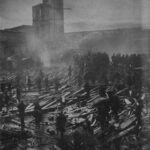
Pemberton Timber Mill
On June 10, 1860, a lumber mill in Pemberton, Massachusetts collapsed, killing 145 and wounding 166 others. Investigations revealed the building was poorly constructed, with inferior building materials, and that the owners overloaded the structure with extremely heavy machinery.
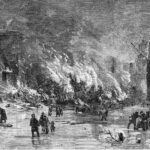
Ashtabula River railroad bridge
On December 29, 1876, a railroad bridge near Ashtabula, Ohio collapsed as a passenger train crossed over it, resulting in approximately 92 deaths and 64 injuries. The president of the railroad company designed the bridge despite a lack of experience or training, described it as “experimental,” and fired two engineers who refused to implement his design choices.
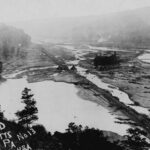
South Fork Dam
On May 31, 1889, a dam in South Fork, Pennsylvania failed, releasing a 3,600,000,000-gallon tidal wave that killed 2,209 people and destroyed 1,600 homes. Owners of the nearly 60-year-old structure had scraped certain safety features and repaired leaks with straw and mud.
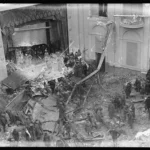
Knickerbocker Theatre
On January 28, 1922, the roof of the luxurious Knickerbocker Theater in Washington D.C. suddenly collapsed and fell onto a well-attended crowd, killing 98 patrons and injuring 133 others. Design and construction flaws in the way the roof was attached to the walls were blamed for the roof’s inability to carry the weight of snow from a recent blizzard.
We would all like to believe that these events are a product of primitive building methods. But Structural collapses have continued into the modern era.
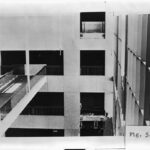
Hyatt Regency walkway
On July 17, 1981, two overhead walkways collapsed during a party, killing 114 people and injuring another 126. The building had only been open a year at the time of the collapse. The investigation revealed that last-minute changes to an already problematic design reduced the load capacity to an unsafe level.
Philadelphia Pier 34
On May 28, 2000, a 91-year-old pier collapsed, causing a week-old nightclub built on the pier to collapse into the Delaware River. The collapse killed 3 women and injured another 36 people. Evidence showed that the owners knew the pier was in serious disrepair and might collapse at any moment, but did nothing.
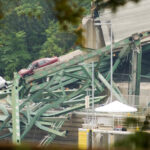
I-35W Mississippi River bridge
On August 1, 2007, a multilane highway bridge collapsed, causing 111 vehicles and 18 construction workers to drop over 100 feet to the river below. Design flaws included components that were too small for the load. Before the collapse, corrosion led officials to consider the possibility of a collapse and the potential need to condemn the structure.
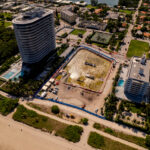
Surfside condominium
On June 24, 2021, a 12-story beachfront condominium in Miami partially collapsed, killing at least 97 people The building was approximately 40 years old, and was undergoing a year-long recertification at the time of the collapse. The cause of the collapse is still being fully looked into, but federal investigators have indicated that it had a design that failed to meet building codes and construction that did not follow its original plans.
Causes of Catastrophic Failures
A properly designed, constructed, and maintained structure should not collapse. One flaw or misstep in the life cycle of a structure can have devastating effects.
Faulty Design and Engineering
Potential problems can start at conception. If an engineer or architect is not sufficiently knowledgeable, or is lazy in the way they design a structure, seemingly small mistakes can throw off a structure’s equilibrium.
Structures should not be designed in an abstract universe. Rather, project planners must select an appropriate site for any structures, and account for any foreseeable issues that are inherent with a given location. Unstable ground means an unstable building, unless sufficient precautions are taken. Sink holes, earthquakes, wind, water intrusion, and other external forces must be factored into the design process, if a structure is to withstand the natural forces to which it will be subjected.
For certain structures―for example, a pedestrian overpass over a busy highway―planners may even need to account for the foreseeable risk that a vehicle may collide with a structure. If a structure is not strong or dynamic enough to withstand the type of impacts it can be expected to experience, people will be put at needless risk of injury or death. Like a house of cards, a structure with mediocre or poor stability can easily collapse with even a small amount of external force, such as a car or truck grazing against a load-bearing element.
Building Code Violations
Most structures are subjected to a certain amount of oversight from local governments, often in the form of building codes. But companies sometimes manipulate the information authorities receive to skirt local ordinances. And building codes are minimum requirements. Compliance with a building code does not mean an architect or engineer should not have done more to protect public safety.
Defective or Incorrectly Sourced Materials
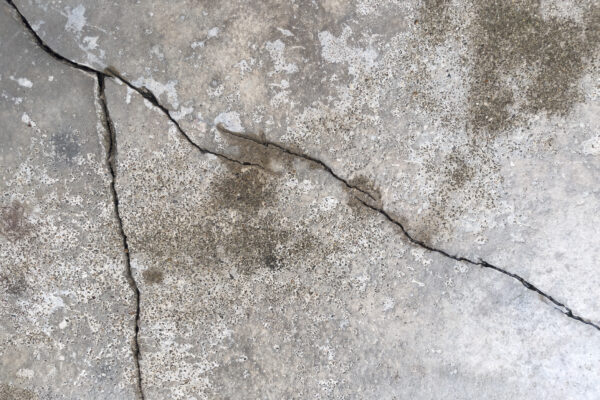
Regardless of designs and plans, greedy developers will sometimes use cheap materials to keep project costs down. Cheap or defective materials can create serious structural integrity concerns. Indeed, defective steel or concrete can turn a good design into a ticking time bomb.
Sloppy or Defective Construction Methods
Problems can also arise from sloppy construction methods. Poor welds, damaged components, and other issues during construction can make a structure unstable and unsafe.
Improper Maintenance
Even if a building is perfectly designed and constructed, with the best materials, a lack of maintenance or improper maintenance can render a structure unsafe. All building materials degrade over time unless steps are taken to prevent degradation or corroded materials are replaced or fortified. Failing to inspect a structure to discover a problem can cause a catastrophic failure. Postponing repairs or using a “band aid” approach puts citizens at risk. The cost of a reasonable repair is always less than the cost of a life lost to a structural collapse.
Failure to Condemn and Secure Unsafe Structures
Indeed, if a structure is not safe, it should be condemned, and steps should be taken to ensure no one is subjected to the risk of a foreseeable collapse. That includes small children or adults with mental impairments who might not understand the risk dilapidated structures can attract. The law is clear that an “attractive nuisance” ― a dangerous condition that draws trespassing children to it ― cannot be left unabated.
Defective designs, construction, or maintenance can each cause structural problems on their own. But as past events have shown, the problems that lead to structural collapses are often multifaceted. A poorly designed building becomes even less safe when the construction is also sloppy. And the risk of collapse grows if problems are ignored.
Safety can be expensive. That’s why greedy corporate developers and property managers sometimes skimp on safety measures. But for any structure that can foreseeably injure or kill someone, there is no more important consideration than safety.
What should you do if you or a loved one was injured or a family member lost their life in a structural collapse?
Structural collapse cases are not easy. When a structure collapses, the evidence is often buried in thousands of tons of debris. And the companies that can afford to build and own these structures have the money to fight victims and their families. That’s why you need lawyers with the resources, resolve, and experience to handle a structural collapse case.
If you or a loved one have been injured because of a poorly designed, built, or maintained structure, call the attorneys at Pritzker Hageman for a free consultation.

“For most family members a lawsuit is not just about the money; it is about getting answers and seeking justice.”
– RAYMOND TRUEBLOOD-KONZ, ATTORNEY AT PRITZKER HAGEMAN
Structural Failure and Building Collapse News
Broken Rail Causes Deadly BNSF Train Derailment Near Pueblo, Colorado
October 16, 2023 – According to a preliminary investigation by the NTSB, a broken rail caused a BNSF coal train to derail off a bridge that crossed I-25 near Pueblo, Colorado. The bridge partially collapsed after the derailment, killing 60-year-old Lafollette Henderson of Compton, California. Lafollette was driving a semi-truck on the interstate below.
The NTSB is investigating the derailment to find out what happened and who was responsible for maintaining the bridge. The Federal Railroad Administration (FRA) says that railroads in the United States are responsible for owning, inspecting, and maintaining the tracks and bridges that their trains use. However, a spokesperson from BNSF told the Denver Post that the state of Colorado owns the bridge that collapsed over I-25. Colorado Governor Jared Polis released a statement that said, “It’s clear that federal funds for rail support are critical for Colorado.” According to data from the FRA, there have been 177 BNSF train derailments so far this year, including 11 in Colorado.
We have obtained 100+ separate verdicts and settlements greater than $1 million:
We obtained this settlement for a man who lost his arm and leg in a gas pipeline explosion.
Our client suffered substantial injuries after ingesting a defective product.
Our client suffered burn injuries over 60% of his body in an explosion caused by improperly-odorized propane.
We represented seven children who suffered intestinal injuries as a result of a defective food product.
Our client suffered burn injuries over 50% of her body when a compressed natural gas line ruptured in a factory, causing an explosion.
We won this verdict for a child with kidney damage from E. coli.
See more settlements & verdicts.
The Pritzker Hageman law firm and our attorneys have been recognized in:
U.S. News & World Report

Pritzker Hageman has been recognized as one of the best law firms for personal injury litigation by U.S. News & World Report every year the award has been given since 2012.
Super Lawyers®, Thomson Reuters

Attorneys at Pritzker Hageman have been awarded the peer selected Super Lawyers distinction every year since 2004.
America’s Top 100 Attorneys®

Lifetime Achievement selection to America’s Top 100 Attorneys®.
Three Time Attorneys of the Year
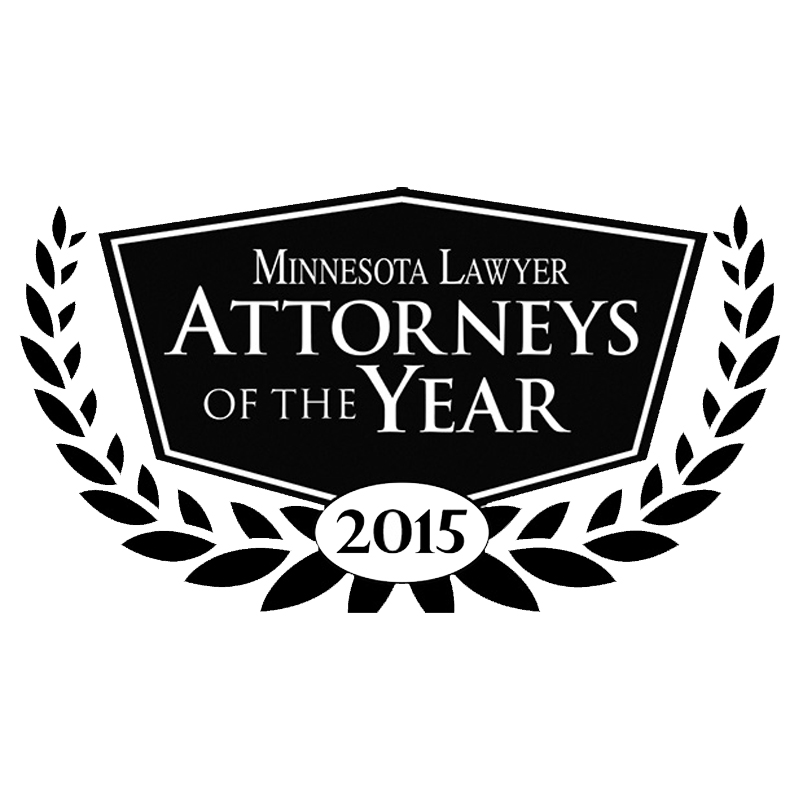
Pritzker Hageman lawyers have been named Attorneys Of The Year by Minnesota Lawyer three times.